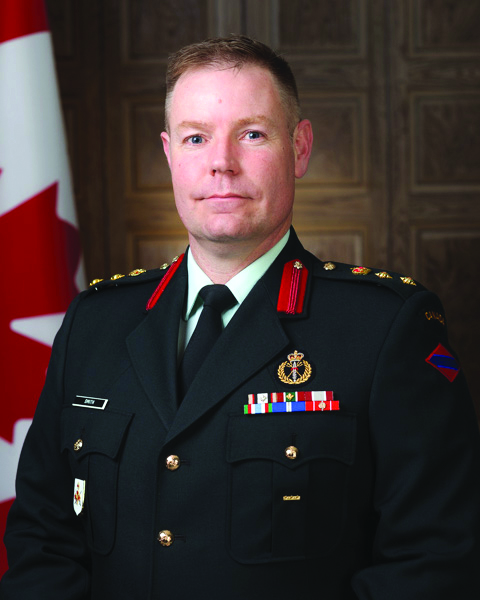Foreword to CAJ Volume 21
by Colonel Jim W. Smith, CD, Director, Canadian Army Land Warfare Centre
A military that is unprepared for urban operations across the broad spectrum is unprepared for tomorrow.”
-Lieutenant-Colonel Ralph Peters

I was delighted to be offered the opportunity to introduce the first of the two editions of the Canadian Army Journal focused on urban warfare. In these challenging times, it does not take much effort to find news or reports on urban warfare. Not long ago, there existed a misconception that urban battles were rare events. In fact, they have always been prevalent, and they are now more relevant than ever due to the high concentrations of people living in urban areas, the shrinking sizes of armies and the strategic value of cities. Recent events in Ukraine and the Middle East underscore the importance of military, economic and political infrastructure densely packed into the urban environment.
Urban combat presents simultaneous military problems at the tactical, operational and strategic levels of war. Synchronizing activities in an urban environment imposes greater difficulty, complexity and physical strain on military forces compared to conventional battles in open, rural or semi-rural areas. The complexity of three-dimensional physical terrain—comprising ground, air and underground— hinders freedom of manoeuvre for military operations. In addition, factors such as intelligence gathering; humanitarian considerations due to civilian presence; social scrutiny; and contested logistics increase the demands on military forces during urban warfare.
Recent portrayals of urban warfare have showcased how traditional military tactics intersect with emerging technologies, adding multidimensionality and layers of complexity to the experience for soldiers. On the one hand, the ongoing conflicts and wars are characterized by the pervasive use of uncrewed air vehicles, space capabilities and the introduction of next-generation howitzers. On the other hand, the disruptions in communication have led to a growing reliance on runners in Ukraine, and lessons have been learned about subterranean tunnel warfare.
The Canadian Army has spent years focused on counter-insurgency battlefields in Afghanistan and Iraq. Capability development supported this mindset. Russian aggression in Ukraine once again reminds us of the evolving character of war. We must adjust our approach to managing new and existing capability. Personnel and Leadership; Research and Development; and Operational Research and Analysis (plus Experimentation); Infrastructure, Environment and Organization; Concepts and Doctrine; Information Management and Technology; Equipment and Support; and the ability to Generate and Project (PRICIE-G) must all be updated.
As Operation UNIFIER extends and expands, it highlights Canada’s ongoing commitment to aiding Ukrainian forces with military training and capacity building.
Fighting in Ukraine has confirmed urban warfare trends that are emerging in modern war. Analysis of operations offers a lens through which to examine the pervasive types of warfare Ukraine is facing now and what many other countries like Latvia might face in the future. Given the indispensability of urban warfare in contemporary times, I consider focusing on this theme to be not only relevant but also timely. Operation UNIFIER provides a case study for examining the current manifestation of warfare. What we learn prepares our forces for the challenges they may face in the future.
